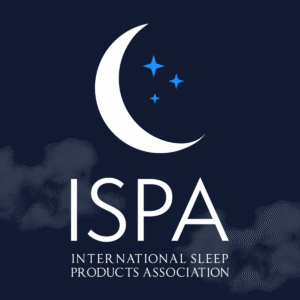Sleep Coaching 6 To 11 Months Previous

When do infants be taught to go to sleep on their very own?
Some of the frequent questions mother and father ask is, “When will my child be taught to go to sleep on their very own?” Whereas each child develops at their very own tempo, most begin constructing this talent between 4 and 6 months of age. Throughout this time, their circadian rhythms mature, permitting them to sleep longer stretches at evening. That is the right alternative to softly train your child the important talent of self-soothing—a key milestone for growing wholesome, impartial sleep habits.
Easy methods to train child to fall asleep on their very own
Serving to your child be taught to go to sleep independently is a gradual course of that requires consistency and persistence. Right here’s how one can get began:
- Begin at Bedtime: Start by instructing impartial sleep at bedtime, when your child is of course most drained and receptive to new routines.
- Put Them Down Drowsy, Not Asleep: Place your child of their crib once they’re calm and drowsy however nonetheless awake. This encourages them to affiliate the crib with falling asleep on their very own, reasonably than counting on exterior aids like rocking or feeding.
- Keep Constant: Select a sleep coaching methodology—just like the Sleep Woman Shuffle or one other method—and persist with it. Infants thrive on predictability, and consistency helps them really feel safe as they modify to new sleep habits.
Keep in mind, studying to go to sleep independently is like every other talent, resembling crawling or strolling. It takes time, follow, and persistence to grasp.

Are you able to sleep coaching from 6 months and older?
Sure, you may completely begin after 6 months! Actually, this age is a superb time to start as a result of most infants are developmentally able to sleep for longer durations with out nighttime feedings. Their rising brains and our bodies are higher geared up to be taught and follow falling asleep independently.
In case your child is older than 6 months, it’s useful to concentrate on nighttime sleep first. Nighttime coaching usually progresses quicker than daytime naps and lays a robust basis for total sleep enchancment. As soon as your child is constantly sleeping properly at evening, you may shift your consideration to nap coaching. Unsure in case your child is prepared? Unsure in case your child is prepared? Right here’s when infants usually develop self-soothing expertise and tips on how to help the method gently and tips on how to help the method gently
Do you sleep prepare for naps too
Naps are a necessary a part of your child’s total sleep routine, and nap coaching is a crucial step in fostering wholesome sleep habits. Right here’s how one can method nap coaching successfully:
- Start After Nighttime Coaching: Deal with nighttime sleep first to construct a robust basis. As soon as your child is sleeping properly at evening, they’ll be higher ready to regulate to nap coaching through the day.
- Apply the Similar Methodology: Use the identical methodology for naps that you simply used for nighttime sleep. This consistency helps reinforce your child’s understanding of what’s anticipated throughout sleep occasions.
- Account for Daytime Challenges: Daytime naps may be trickier due to pure distractions like gentle and noise. In case your child struggles to nap, take into account short-term options like motion-based sleep (e.g., stroller or automobile rides) to forestall overtiredness. As soon as their total sleep routine improves, you may revisit nap coaching.
Nap coaching usually takes extra time and persistence than nighttime coaching, however it’s definitely worth the effort. A well-rested child through the day is much less cranky, falls asleep extra simply at bedtime, and usually sleeps higher by the evening.

Sleep coaching strategies 6 to 11 months
| Sleep Coaching Methodology | Description | What Kim Would Say | Key Concerns for Mother and father |
|---|---|---|---|
| Light Strategies | Regularly scale back parental involvement in sleep, resembling “fading” or her Sleep Woman Shuffle. Mother and father keep shut and supply reassurance whereas instructing infants to self-soothe. | “This can be a great choice for households preferring to attenuate tears and stay current through the course of. It takes persistence and consistency however permits mother and father to construct their baby’s sleep expertise gently.” | – Very best for households who desire a gradual, hands-on method. – Requires time, persistence, and consistency. |
| Ferber Methodology | Timed check-ins with managed crying intervals. Mother and father present temporary reassurance whereas encouraging self-soothing. | “For households who can tolerate some crying, this methodology can work, however it requires a transparent plan and consistency. I encourage mother and father to hearken to their instincts—if it doesn’t really feel proper, a gentler methodology just like the Shuffle is perhaps higher.” | Could be emotionally difficult for some mother and father annd child . – |
| Cry It Out (CIO) | Full extinction—child is left to cry with none intervention till they go to sleep. | “This method is not aligned with my philosophy. Whereas some households see outcomes, I consider it may be too irritating for each the child and fogeys, particularly throughout developmental levels like 8 months, when separation anxiousness peaks.” | – Entails important crying. – Usually emotionally troublesome for fogeys. – Not appropriate for households preferring to offer consolation through the course of. |
| Chair Methodology | Mother and father sit close to the crib and progressively transfer farther away over days or even weeks. Presents reassurance whereas fostering independence. | “This method aligns properly with my Sleep Woman Shuffle. It affords a gradual transition that enables mother and father to reassure their child whereas fostering independence. Consistency is essential, and fogeys must really feel comfy with the method.” | – Slower however efficient for these in search of a supportive presence. – Requires dedication and avoiding new sleep crutches (e.g., patting). |
| Decide Up/Put Down | Mother and father choose up the child to assuage and place them again within the crib as soon as calm, repeating as wanted. | “This generally is a good match for fogeys who really feel extra comfy actively soothing their child. Nevertheless, some infants might discover the frequent selecting up and placing down overstimulating, so it’s vital to observe your baby’s cues.” | – Offers lively reassurance for fogeys. – Can overstimulate infants who want consistency. – Requires flexibility primarily based in your child’s temperament. |

Sleep coaching 6-month-old
By 6 months, most infants are prepared to begin. Their circadian rhythms are established, and lots of can sleep longer with out feeding. One of the best time to start will depend on your child’s temperament and your readiness (difficult too throughout a 6 month sleep regression) to decide to consistency—it’s as a lot about your preparation as their age The best time to begin is between 4–6 months, when most infants not want frequent evening feedings and might be taught to self-soothe
What a couple of 6-month-old breastfed child
Breastfeeding gained’t intrude with sleep coaching. To assist your child be taught impartial sleep:
- Separate Feeding from Sleep: Nurse earlier within the bedtime routine, not because the final step.
- Drowsy however Awake: Place your child within the crib calm however awake to forestall nursing-to-sleep dependence.
Verify together with your pediatrician to make sure your child will get sufficient energy through the day. If evening feedings are nonetheless wanted, maintain your method constant and progressively scale back feeding occasions or introduce a dream feed
Nap coaching 6-month-old
Nap coaching usually takes longer than nighttime sleep, however the identical ideas apply:
- Begin With the First Nap: Infants are normally extra receptive to coaching earlier within the day.
- Hold It Constant: Use the identical methodology for naps that you simply do at evening.
- Observe Awake Home windows: At 6 months, naps ought to observe 2–3 hours of wakefulness. Look ahead to indicators like eye rubbing and purpose to place your child down earlier than they’re overtired.
If naps are a wrestle, short-term movement sleep (e.g., stroller rides) can stop overtiredness when you work on impartial sleep.
Crib coaching 6-month-old
To make sure your child feels secure and safe of their crib:
- Make the Crib a Completely happy Place: Let your child play within the crib through the day to affiliate it with consolation.
- Bedtime Routine: Use a chilled routine (e.g., bathtub, feeding, story) to ease transitions into the crib. Create a 6-month sleep schedule.
- Keep Constant: Persist with your chosen sleep methodology for each bedtime and evening wakings.
Easy methods to put 6-month-old down for nap
- Mini Bedtime Routine: Create a shorter model of your bedtime routine for naps.
- Observe Wake Home windows: Put your child down after about 2.5 hours of wakefulness to keep away from overtiredness.
- Drowsy However Awake: Lay your child down calm however awake, and use your chosen sleep methodology in the event that they fuss.

Sleep coaching 7-month-old
At this age, your child is probably going prepared as they’re developmentally able to studying to go to sleep independently, however you could discover challenges from the 7-month sleep regression brought on by new expertise like sitting or crawling. This regression is short-term and might make consistency in coaching much more vital to assist them by it
Why 7 Months Is Distinctive
- Elevated Consciousness: Your child now acknowledges routines, so consistency is extra vital than ever.
- Mobility Milestones: Rolling, sitting, or pulling to face might disrupt sleep—follow these expertise through the day.
- Separation Nervousness: This usually peaks at 7–8 months, so provide reassurance with out creating new sleep crutches.
Steps to Sleep Practice a 7-Month-Previous
- Bedtime Routine: Use calming actions (bathtub, therapeutic massage, story) and purpose for sleep by 7–8 PM. Construct these habits into your 7 month sleep schedule.
- Drowsy However Awake: All the time place your child within the crib awake, instructing them to go to sleep on their very own.
- Select a Sleep Coaching Methodology:
- Sleep Woman Shuffle: Gradual reassurance, transferring farther from the crib over time.
- Light Strategies: Choices like pick-up/put-down that mix soothing with independence.
- Keep away from harsh strategies like cry-it-out, in the event that they don’t align with your loved ones’s values.
- Constant Wake Time: Hold mornings constant round 7–7:30 AM to control their physique clock.
Sleep coaching 7-month-old breastfed child
- Separate Feeding From Sleep: Transfer feeding earlier within the bedtime routine (e.g., nurse, then learn a guide or sing a music).
- Verify Daytime Energy: Guarantee your child is getting sufficient milk and solids through the day—most 7-month-olds don’t want evening feedings.
- Plan for Night time Wakings:
- Hold one scheduled evening feeding if wanted, at all times on the identical time.
- Regularly shorten nursing periods to section out in a single day feeds.
- Consolation With out Feeding: Soothe verbally or with gentle contact for non-hunger wakings to show self-soothing.

Sleep coaching 8-month-old
By 8 months, most infants are able to sleep by the evening and observe a constant schedule. Nevertheless, developmental milestones like crawling or pulling to face, and separation anxiousness (which peaks round this time) or the 8 month sleep regression, could make sleep more difficult
Ought to 8-month-old sleep by the evening
Many 8-month-olds are able to sleeping 10–12 hours at evening with out feedings if they’re:
- Consuming Sufficient Throughout the Day: Your child is getting ample milk or formulation and solids.
- Wholesome and Rising Properly: No medical considerations require evening feedings.
- Waking From Behavior, Not Starvation: In case your child wakes on the identical time each evening and doesn’t end a feeding, it could be a behavior.
Easy methods to Sleep Practice an 8-Month-Previous
- Bedtime Routine: Create a chilled, constant routine (e.g., bathtub, studying, and cuddles) half-hour earlier than bedtime. Purpose in your 8-month sleep schedule on your child to sleep by 7–8 PM.
- Drowsy However Awake: Place your child within the crib calm and drowsy, so that they be taught to go to sleep independently.
- Select a Light Methodology:
- Sleep Woman Shuffle: Keep close to the crib for reassurance, progressively transferring farther away over a number of nights.
- Decide Up/Put Down: Soothe your child by selecting them up briefly, then inserting them again within the crib awake.
- Keep away from cry-it-out strategies in the event that they really feel too harsh for you or your child.
- Constant Wake Instances: Wake your child on the identical time day by day (round 7 AM) to control their physique clock.
- Night time Wakings:
- Reassure with out feeding except needed.
- Persist with the identical method every time to set expectations.
Sleep coaching 9-month-old:
By 9 months, teaching helps set up constant sleep patterns, whilst developmental milestones like pulling to face or separation anxiousness could cause disruptions. Deal with strengthening nighttime and nap routines for long-term success.
Nap coaching 9-month-old
- Transition to Two Naps: Purpose for a morning nap round 9:30–10:00 AM and a day nap round 2:30–3:00 PM. Complete daytime sleep ought to be 2–3 hours within the 9-month sleep schedule.
- Pre-Nap Routine: A shorter model of your bedtime routine (diaper change, story, cuddle) alerts sleep time.
- Consistency Is Key: Use the identical teaching methodology for naps and bedtime to strengthen self-soothing expertise
Sleep coaching a 10-month-old
By now, some infants can sleep independently for 11–12 hours at evening and take 2–3 hours of daytime sleep break up between two naps. Momentary disruptions might happen as a consequence of teething, separation anxiousness, 10-month sleep regression or mobility milestones.
Sleep coaching a 10-month-old breastfed child
- Separate Feeding From Sleep: Nurse earlier within the bedtime routine to keep away from the feeding-to-sleep affiliation.
- Deal with Night time Wakings: Regularly scale back the quantity or size of nighttime feeds with steering out of your pediatrician. Use a constant method just like the Sleep Woman Shuffle to assuage your child with out nursing.
- Drowsy However Awake: All the time place your child within the crib calm however awake to encourage impartial sleep expertise.
Sleep coaching 11-month-old
At 11 months, your child nonetheless wants 11–12 hours of nighttime sleep and a couple of–3 hours of daytime sleep throughout two naps. Sleep regressions and boundary testing might emerge, making consistency extra vital than ever.
Ideas for Sleep Teaching an 11-Month-Previous:
- Persist with Routines: Reinforce predictable 11-month sleep schedule, bedtime and nap routines to assist your child acknowledge sleep cues.
- Deal with Sleep Crutches: Transition away from rocking, feeding, or holding by encouraging self-soothing with strategies just like the Sleep Woman Shuffle.
- Deal with Separation Nervousness: Briefly consolation your child throughout wakings, however keep away from introducing new habits like rocking or feeding again to sleep.




